Key to correct pump design is fluid & application information
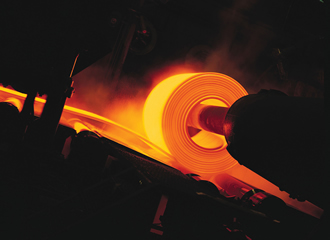
Generally, there are two categories of pump design - centrifugal and reciprocating (piston). Mike Sherman, Marketing Manager at RMI Pressure Systems, looks at the design criteria and some of the applications.
The key to matching the correct design of pump to an application is firstly having all the necessary information relating to the application and the fluids involved. Approaching a manufacturer which has experience and engineering expertise in the field of your application will lead to a better understanding of the requirements of the application. This in turn will allow the manufacturer to propose a suitable design that will integrate with the existing equipment and control systems and provide a reliable and efficient pumping system.
The centrifugal pump is the most common design in the world, using a simple principle to produce a robust, effective and relatively inexpensive pump. Using an impeller, located in a volute, the fluid is pressurised by transferring the mechanical energy of the motor to the impeller and increasing the velocity of the fluid and consequently the pressure increases. However, centrifugal pumps are typically used for applications where a lower system pressure is required and therefore would not normally be considered suitable for high pressure applications.
High Pressure Pump Design
A reciprocating pump discharges liquid by changing the internal volume of the pump and uses non-return valves (NRVs) at both the inlet and outlet ports of the pump. Typically these pumps can produce 1000 bar in pressure, however, specialist, ultra high pressure pumps, capable of more than 7,000 bar are available.
The benefits of the reciprocating pump is that it produces a fixed volume of fluid displacement at a given speed and provides a constant flow, regardless of pressure. This means that variable capacity can be achieved by changing the pump speed. In contrast, the centrifugal pump would be forced up and down the performance curve, varying the flow which may cause problems for the application.
Due to the fundamental design of the reciprocating pump, it is more often controlled by a variable speed controller which allows accurate control of the output pressure. For applications requiring increased flow rates, one or more pumps can be added in parallel to the original to produce the desired flow rate at the same pressure rating.
One crucial aspect of pump design is the associated piping and connections, which can cause serious problems if the system has been poorly designed. Cavitation is one of the more common issues that arise when pressurising fluids and this can cause severe pressure spikes that cause damage to internal pump components. Additional issues include vibration and noise, which can also impact the working environment if the pump design has not been fully tested and commissioned correctly.
As a leading high pressure pump specialist, RMI Pressure Systems understands the many and varies demands of high pressure pumping applications. With over 100 years experience in producing premium quality, high pressure pumps for a wide range of industrial applications - including mining, steel production and oil & gas - RMI regularly delivers bespoke pumping solutions into demanding working environments.
Safety First
It is important that the pump design incorporates the necessary safety features, including a safety relief valve to protect against a dead head situation, when the system demand for flow has stopped, causing the pressure will rise instantly. The safety valve should be designed to allow the entire pump capacity to flow, while the opening point should be set at 10% above the operating pressure. In addition, the pipework associated with the safety relief valve should be properly sized to ensure adequate flow conditions.
RMI includes a number of safety circuits to prevent a potential dead head condition, including a pump safety relief valve, which protects the pump against a potential hydraulic lock. In addition, there are oil temperature and pressure sensing circuits as well as motor overload monitoring all of which can indicate a potential issue with the system and allow the pump to be stopped prior to any potential damage being caused. A pump's sealing system is equally important when considering its safety as well as overall performance and reliability. For high pressure reciprocating pumps the task is typically performed by the stuffing box, which contains packing and lubricant in various configurations depending on the application. This packing is a service item and should be able to be replaced without too much interference with the main pump assembly.
Efficiency Built In
Having considered safety and reliability, efficiency will be next on the list of priorities for many operators. Here reciprocating pumps offer additional benefits as the design offers greater mechanical efficiency, which means that a smaller prime mover can be used and less energy is consumed. By carefully selecting the correct motor and matching it to the pumping system, a more efficient combination can be created, resulting in lower total cost of ownership (TCO) for the client.
Further efficiency benefits offered by RMI's design can include the stored energy offloading system. This reduces energy consumption by allowing the pump to idle in a pressurised standby condition, while still being able to quickly and efficiently return to full service when required. This alternative to complex by-pass, drain or accumulator systems allows the pump to run, without generating further pressure, while allowing system flow and pressure to be maintained when required.
Responsive Control
Working closely with industry experts, RMI has a reputation for supplying some of the most reliable high pressure pumping systems available. With systems being used in safety critical functions it is essential that the reliability is beyond question; requiring months of continuous testing before being accepted for operational duty. RMI's impressive reliability is ensured by using only the best quality components and materials, and manufacturing to exacting tolerances, to deliver pumps using the latest design techniques.
RMI also has a policy of continuous development of energy efficient products, which has led to the introduction of the ODIN (On Demand Intelligence) control system. This system uses a range of data supplied from equipment used in the process of continuous longwall mining and uses it to calculate the changes in demand for hydraulic fluid before they occur. In this way ODIN can modulate the pump speed and change the flow and pressure characteristics to meet demand in the most responsive way possible.
High pressure pumps are required to deliver results in some of the most demanding environments. From underground mining to testing subsea umbilical systems on oil & gas platforms, the technical criteria and engineering standards can be hard to achieve but RMI continues to deliver reliability and premium quality to these and many other industries.
Similar articles
More from RMI Pressure Systems
- Innovation ahead of regulations pushed in electric motor industry 7th September 2016
- High Pressure Pumps - Safeguarding your investment 28th July 2015
- High-pressure pumps - what price reliability? 2nd July 2015
- On Demand INtelligence delivers savings for high pressure pumps 30th April 2015

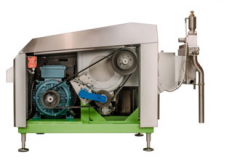
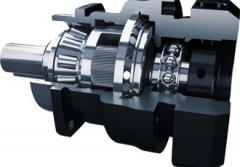
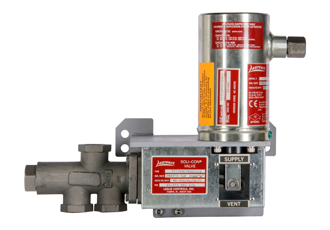
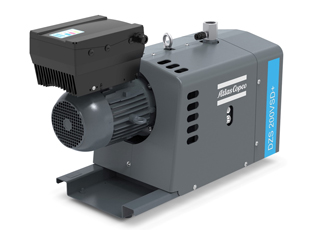







Write a comment
No comments